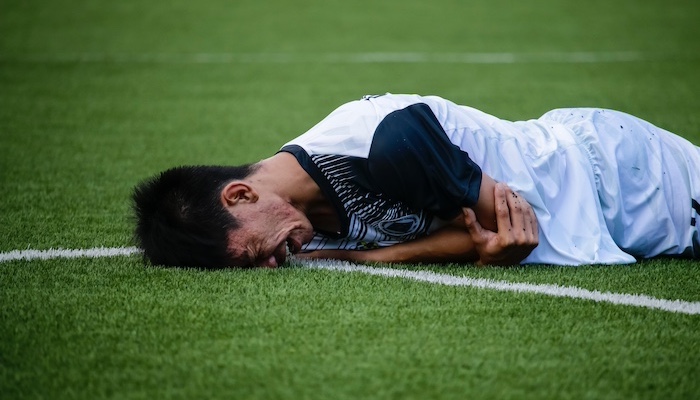
Introduction
Shoulder pain is common in men and women who remain physically active in their thirties and forties. There are many potential causes, but one of the more common is something called impingement syndrome.
Impingement syndrome is a condition that causes pain in the front of the shoulder, particularly with overhead activities, resulting from bursitis and tendinitis in the rotator cuff tendon. Middle-aged men and women who lift weights regularly are particularly prone to this condition because of improper training and muscle imbalances that can develop around the shoulder. This can result in anterior shoulder pain when lifting the arm above the shoulder or across the chest, often with aching at night that makes it difficult to sleep.
The good news is that this syndrome can largely be avoided by understanding the anatomy and biomechanics of the shoulder, and following proper training techniques.
Using Proper Training Techniques
Most people find it hard to find the time to fit a weight training program into their already busy schedules. When time is made, it is usually limited and therefore we tend to focus on the muscles that give us the biggest bang for our buck – namely the biceps, triceps, pectoralis major, and deltoid. However, taking this abbreviated approach to strengthening can lead to muscle imbalances that cause pain.
Workout enthusiasts know that if you strengthen one muscle, you should also build comparable strength in that muscle’s antagonist – or the muscle that works in the opposite direction. For example, most people understand that biceps strengthening should be balanced with triceps strengthening to keep the muscles around the upper arm that flex and extend the elbow at comparable strength and tone.
But when it comes to the shoulder, the antagonist muscles become less obvious, because many of them are buried beneath other structures and cannot be seen by just looking at the shoulder.
Learning More about How the Shoulder Works
In the shoulder, the deltoid muscle elevates the arm to the level of the shoulder and above; In contrast, simultaneously, the rotator cuff muscles contract to keep the head of the humerus (the ball of the joint) from elevating and tightly centered in the shoulder socket as the arm is lifted.
The deltoid and the rotator cuff are antagonists - that is, they perform actions that are opposite of each other. When the deltoid muscle gets stronger than the rotator cuff muscles, the head of the humerus is not pulled to the center of the joint, migrates up out of the socket, and pinches (or “impinges”) the rotator cuff tendon and surrounding soft tissues (the bursa) that cross above the humeral head. The rotator cuff tendon is pinched in the limited space between the shoulder joint and the boney “roof” of the joint (the acromion).
This repeated impingement causes progressive inflammation, swelling of the tendon and bursa, and pain, the combination of which is called impingement syndrome.
Treating and Preventing Impingement Syndrome
A key to treating or preventing impingement syndrome is to train the rotator cuff muscles as effectively as you train the deltoid muscle, so that strength around the shoulder remains in balance. You would never work your biceps without triceps, or quads without hamstrings – so why work the deltoid and not the rotator cuff?
Athletes should always listen to how their body responds to the activity they engage in, and if they do have problems, they should adjust to them and not push through them. It works the same way with a rehab program – if something bothers you, shorten the duration, change the angle, or give it up entirely. There are many different ways to do these exercises. A good trainer or therapist will help make those adjustments.
Precision Pain Care and Rehabilitation has two convenient locations in Richmond Hill – Queens, and New Hyde Park – Long Island. Call the Queens office at (718) 215-1888 or (516) 419-4480 for the Long Island office to arrange an appointment with our Interventional Pain Management Specialists, Dr. Jeffrey Chacko or Dr. Sonny Ahluwalia.















